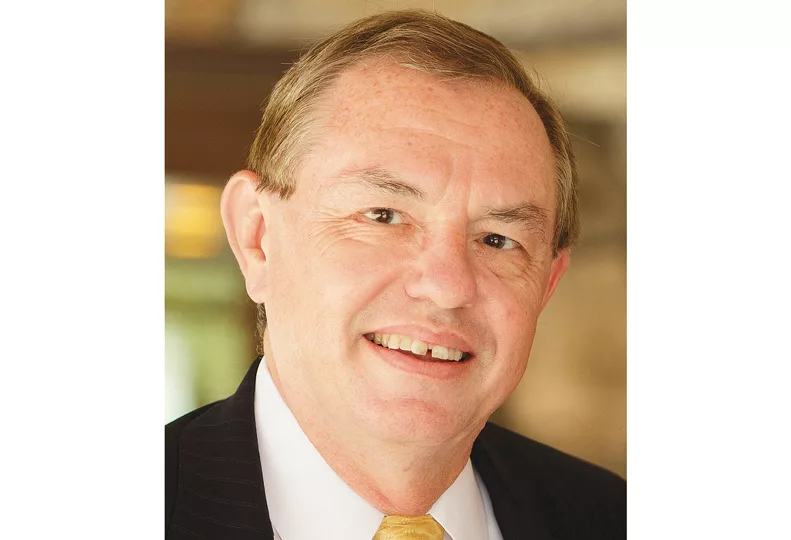Prioritizing can make multiple savings goals attainable
Three-leg model targets emergency, midrange, retirement objectives

The sounds of coins clanking into a piggy bank are etched indelibly into our collective consciousness.
Putting those pennies, nickels, and dimes into a ceramic sculpture felt good when we were 5 or 6 years old. You might not even remember what you were saving for, but there was a sense of accomplishment when the piggy bank was full many years later. That feeling can be a fond memory for many, but why have we forgotten that warm feeling?
The truth is Americans are terrible savers. Our good intentions often fall short of our goals, leaving us wondering, “Where did all my money go?”
A small group of our society is actually savers – not spenders. It begs the question: How much should I save and where should I save it? Spoiler Alert – the cute piggy bank is going to be lonely.
Let’s get real. If you are a spender, you may want to save, and maybe you will save a little bit now and then. But absent a disciplined process, you’ll end up spending it faster than you can save it. If this is you, a deliberate desire to change, plus an action plan and an accountability partner (spouse) are a must.
If you are a saver, where are you saving your money? And how much should you be saving? Often, people start with an emergency fund, and almost everyone understands that we ought to be saving for retirement. An emergency fund should be kept in a bank or a credit union or a money market fund where it’s safe and easy to access. Retirement savings should arguably be invested in growth vehicles for the long term.
How much is enough? A popular recommendation is the 50/30/20 rule, with 50% of your income devoted to the essentials, 30% of your income devoted to discretionary spending, and 20% toward your savings goals.
Spokane-based certified financial and estate planner and chartered life insurance underwriter Jim Lusk, of Retirement Nationwide Inc., gives clients sound advice, “Save until it hurts!”
But what about other goals? And how should the savings for other goals be invested?
These other goals often include college funding and large-purchase funding, such as recreational vehicles, boats, vacation homes, and investment properties.
For these longer-range goals, accessing your money is less important than the growth toward a given goal. It falls into the intermediate goal category. It allows for the use of funding vehicles to do double duty as both investment vehicles and protection devices.
For example, many forms of cash-value life insurance have secondary investment attributes that can be accessed tax free, when done right, and offer reasonable return potential. Because cash-value life also can include a form of disability insurance and a death benefit that will allow for “self-completion” in the event of either death or serious disability, these can be very flexible and powerful funding instruments.
Think of your savings program as a three-legged stool. The first leg is your emergency fund. The second leg is your midrange fund, and the final leg is your retirement fund.
It’s not a matter if an emergency will occur. They will happen. If you don’t have an emergency fund, you will have to borrow money or sell something to resolve the crisis.
Clearly, an emergency fund is essential. Start saving immediately. After the emergency fund is built to provide three to six months of income in case you or your spouse lose a job, you can redirect those monthly savings toward the middle leg.
The retirement leg is in some ways the most flexible, but it also can be the most difficult to access before retirement.
It’s flexible because you usually have the choice of tax-free results (the Roth option) or a tax-deferred option. Often, your employer will provide incentives for you to save for retirement by offering a match up to a capped amount. That is sometimes referred to as free money, but it really isn’t – it is part of your compensation package and to voluntarily decline to be paid simply doesn’t seem reasonable. In other words, take the match.
Be careful that you don’t overfund the tax-deferred bucket. Since those funds are generally invested in growth instruments, you could end up with a significant tax burden in retirement that could be avoided by careful planning.
When the retirement bucket is at maximum and you are still able to save more, then consider over funding the middle bucket. Of all three, once the funding mechanism is established, this is the most flexible and powerful.
Start saving today. It will feel awesome again.
Financial consultant Donald Morgan is an accredited investment fiduciary with Independent Wealth Connections and is a registered representative of securities services provider LPL Financial. He can be reached at 509.931.1088, or at [email protected]
Related Articles
Related Products

_c.webp?t=1763626051)
_web.webp?t=1764835652)

